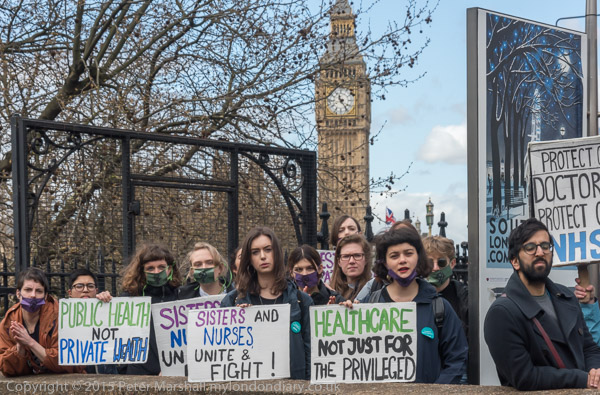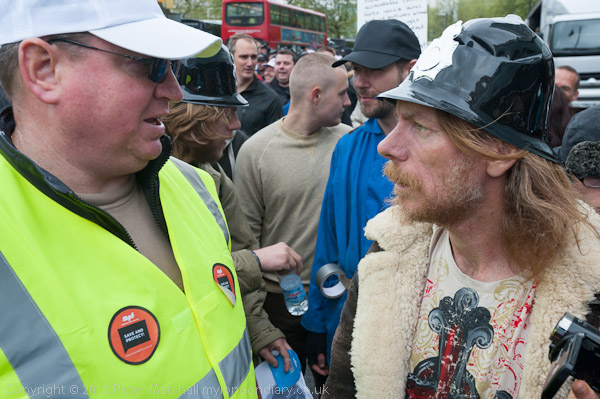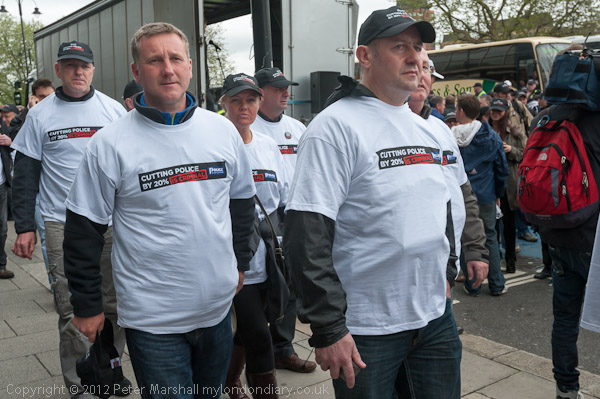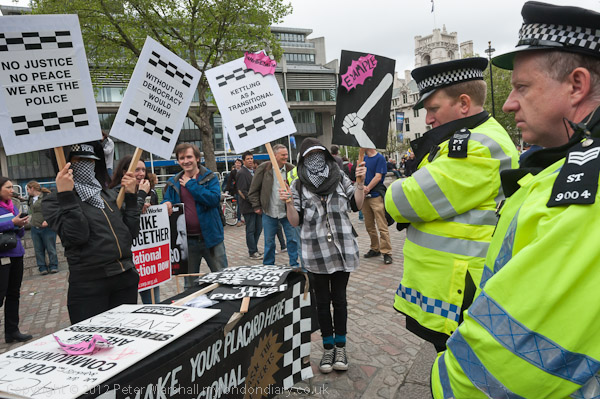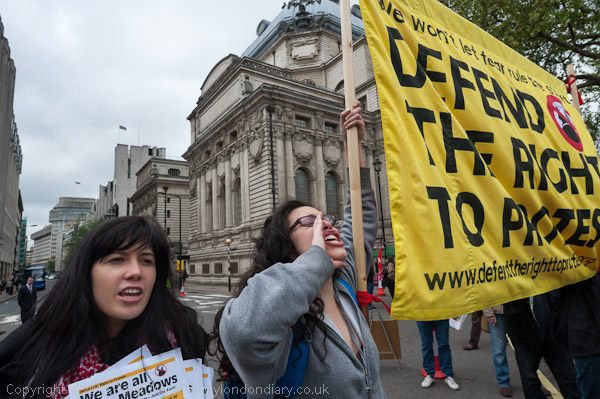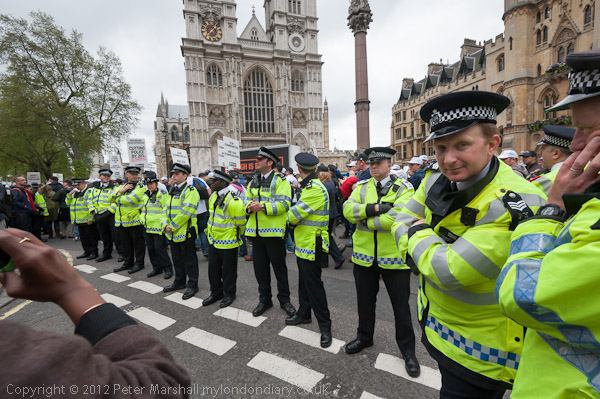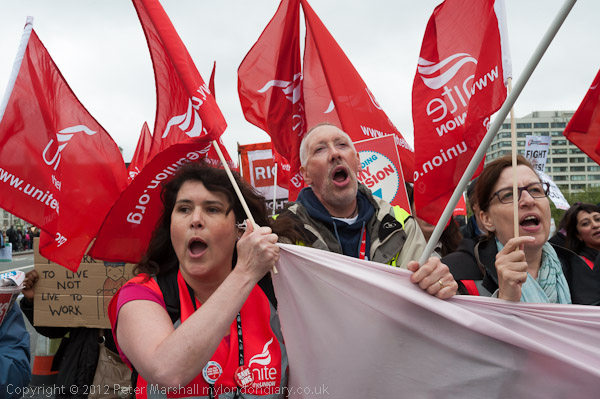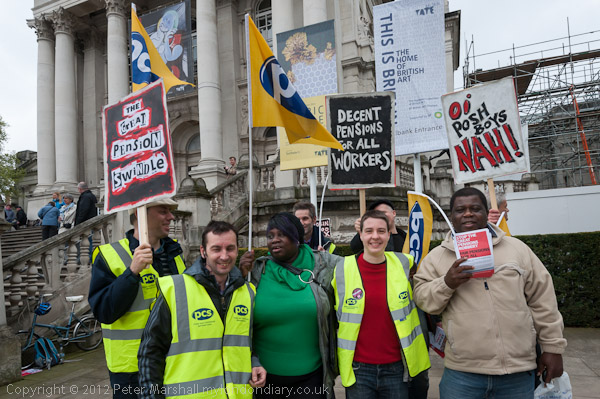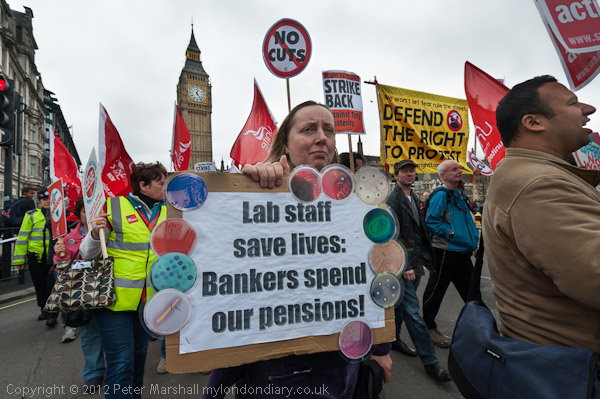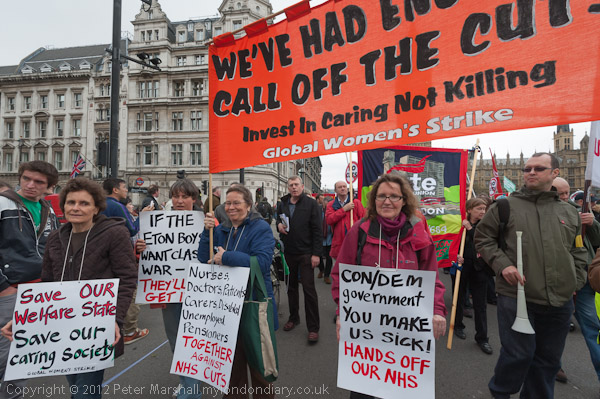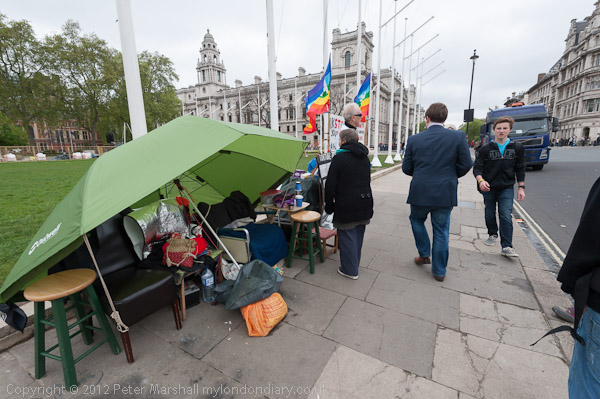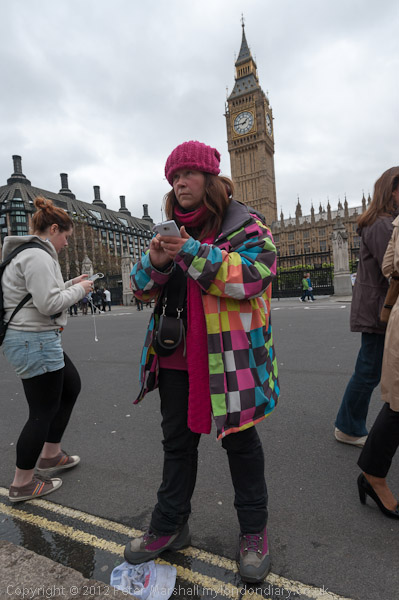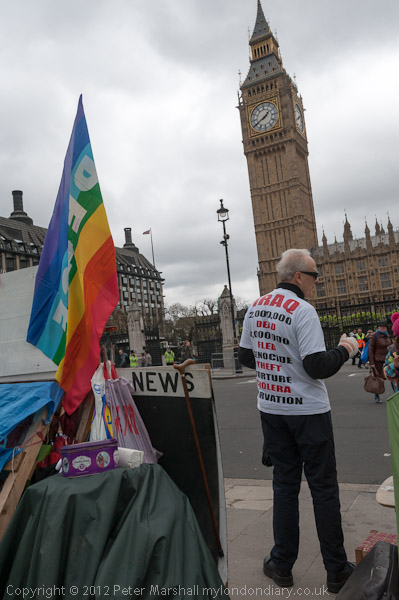Junior Doctors and Student Nurse Bursaries: On Wednesday 6th of April 2016 I photographed a picket and rally against the imposition of new contracts on junior doctors – hospital doctors now renamed to resident doctors to better reflect their status and then a march rally and die-in against the axing of NHS Student Bursaries.
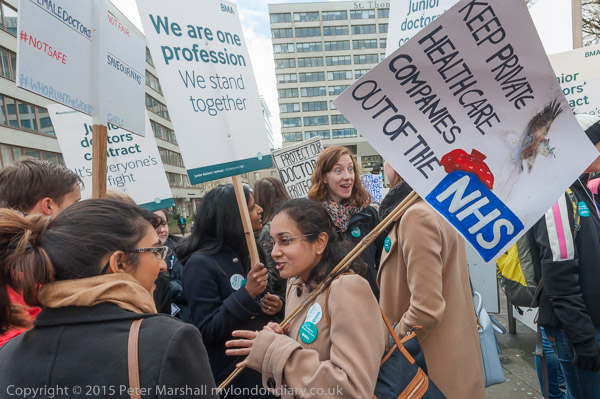
The NHS was under attack from the Conservatives in various ways throughout their time in government from 2010 to 2024 and its hard to find any rational explanation of most of their policies other than a desire to bring in increasing privatisation. A desire perhaps largely driven by MPs financial interests in health companies as well as by the donations they receive.
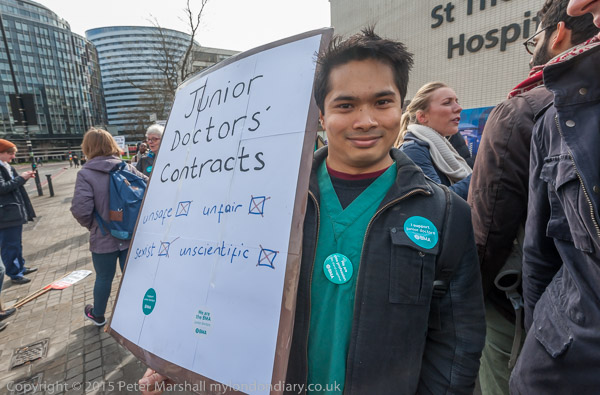
Although the Labour Government quickly solved some of the outstanding pay issues in the NHS, research reveals that “Starmer’s cabinet received more than £500,000 in donations alone from lobbyists, hedge funds and private equity firms connected to the private healthcare sector since 2023.”
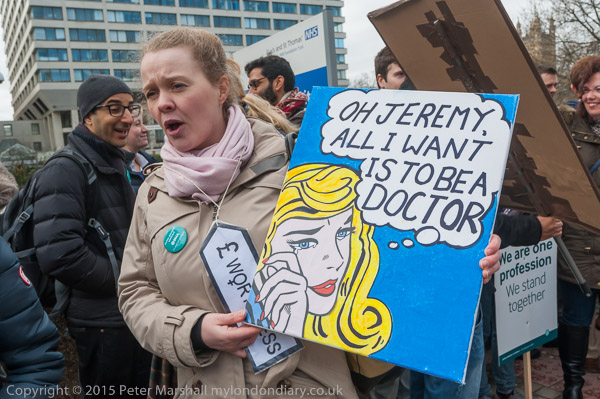
The Good Law Project gives more details on some of these donations to Wes Streeting. They say that “60% of the registered donations accepted by the health secretary come from people and companies linked to private health“, amounting to a total of £311,400 since 2015. Streeting has been one of the most vigorous advocates of private health company involvements in the NHS.
Support for Junior Doctor’s Picket – St Thomas’ Hospital
New contracts being imposed by Secretary of State for Health and Social Care Jeremy Hunt were described as sexist, racist and classist, and as aimed at easing the takeover of the NHS by private healthcare companies which is currently taking place. The doctors say the contract will reduce safety in hospitals, removing safeguards on overwork and unsocial hours. They claim the contract will particularly affect the disabled and women in general, both as workers in the NHS and as users of its services.
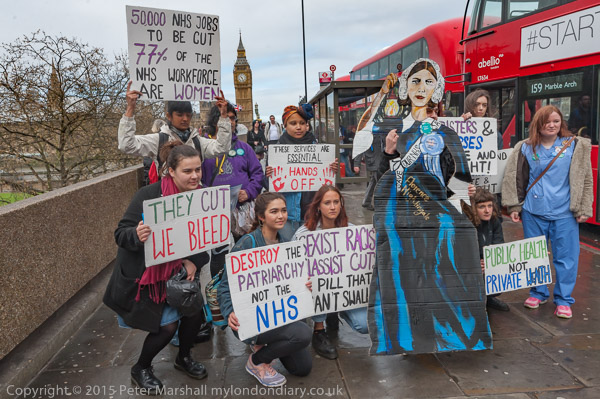
There were speeches at a rally next to the picket line at St Thomas’ Hospital and supporters, including Sisters Uncut, trade unionists, students, student nurses, medical professionals and DPAC members had come to support the doctors.
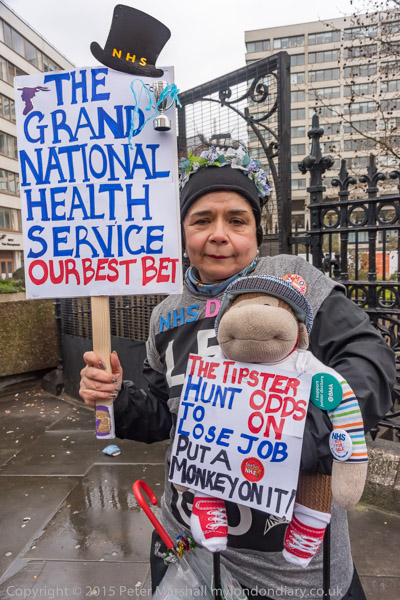
As well as some junior doctors, other speakers included Sara Tomlinson of Lambeth Teachers Association who announced that the NUT would be coordinating its strikes with further actions by the doctors, Danielle Tiplady, an organiser of the ‘Bursary or Bust’ campaign against the government’s intention to axe NHS student bursaries, Paula Peters of DPAC and a speaker for Sisters Uncut.
Support for Junior Doctor’s Picket
Bursary or Bust march to Dept of Health
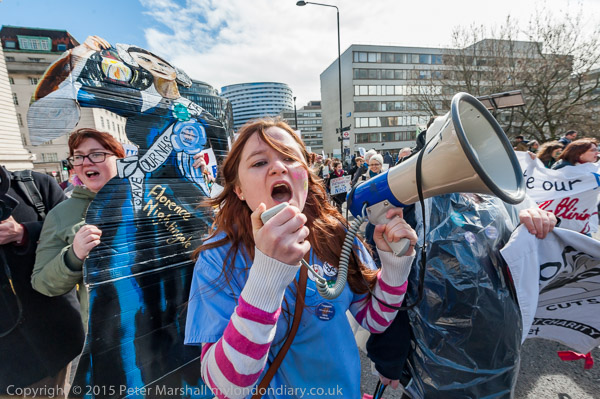
As the picket outside St Thomas’ Hospital was about to come to an end most of those who had taken part in the rally marched the short distance across Westminster Bridge to a rally in Whitehall outside Richmond House, then the headquarters of the Department for Health and Social Security.
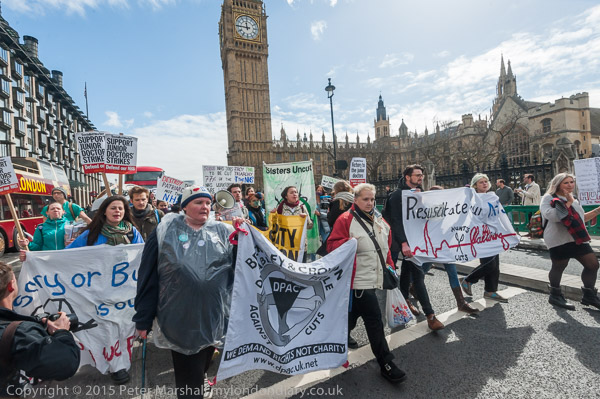
The march was led by DPAC and student nurses from the ‘Bursaries or Bust’ campaign included Sisters Uncut, trade unionists, students, medical professionals and DPAC members. They were followed a few minutes later by junior doctors at the end of their picket.
Bursary or Bust march to Dept of Health
Bursary or Bust Die-In & Rally – Dept of Health, Whitehall
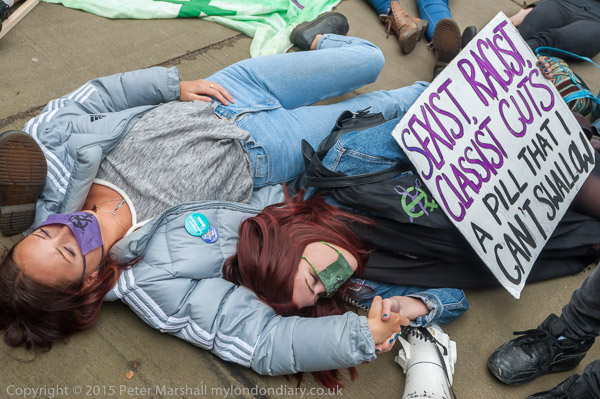
It was hard to see the axing of bursaries for student nurses which eventually happened in 2017 as anything more than a direct attack on the NHS, then and now desperately short of nurses. The most recent statistics show 27,000 unfilled nursing positions.

Nurses are required as an integral part of their training to spend long hours working as nurses in hospitals where they are a vital part of the workforce. Along with long hours of study this makes them unable to take the part-time jobs that many students now work.

Axing the bursaries also makes it much for difficult for more mature entrants and those from less affluent backgrounds to train to become nurses and midwives.
Bursary or Bust Die-In & Rally
Flickr – Facebook – My London Diary – Hull Photos – Lea Valley – Paris
London’s Industrial Heritage – London Photos
All photographs on this page are copyright © Peter Marshall.
Contact me to buy prints or licence to reproduce.
